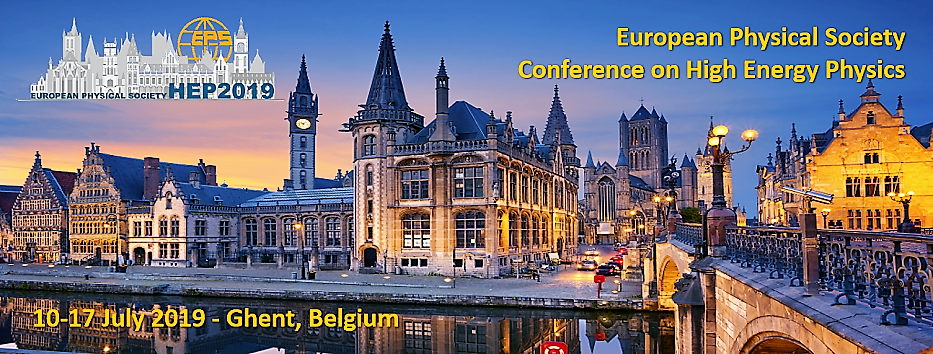Speaker
Description
The knowledge of initial flux, energy and flavor of current neutrino beams is currently the main limitation for a precise measurement of neutrino cross sections. The ENUBET ERC project (2016-2021) is studying a facility based on a narrow band neutrino beam capable of constraining the neutrino fluxes normalization through the monitoring of the associated charged leptons in an instrumented decay tunnel. In particular, the identification of large-angle positrons from $K_{e3}$ decays at single particle level can potentially reduce the $\nu_e$ flux uncertainty at the level of 1%. This setup would allow for an unprecedented measurement of the $\nu_e$ cross section at the GeV scale. Such an experimental input would be highly beneficial to reduce the budget of systematic uncertainties in the next long baseline oscillation projects (i.e HyperK-DUNE). Furthermore, in narrow-band beams, the transverse position of the neutrino interaction at the detector can be exploited to determine a priori with significant precision the neutrino energy spectrum without relying on the final state reconstruction.
This contribution will present the advances in the design and simulation of the hadronic beam line. Special emphasis will be given to a static focusing system of secondary mesons that, unlike the other studied horn-based solution, can be coupled to a slow extraction proton scheme. The consequent reduction of particle rates and pile-up effects makes the determination of the $\nu_\mu$ flux through a direct monitoring of muons after the hadron dump viable, and paves the way to a time-tagged neutrino beam. Time-coincidences among the lepton at the source and the neutrino at the detector would enable an unprecedented purity and the possibility to reconstruct the neutrino kinematics at source on an event by event basis. We will also present the performance of positron tagger prototypes tested at CERN beamlines, a full simulation of the positron reconstruction chain and the expected physics reach of ENUBET.
References:
F. Acerbi et al., Irradiation and performance of RGB-HD Silicon Photomultipliers for calorimetric applications, JINST 14 (2019) P02029.
F. Acerbi et al., A high precision neutrino beam for a new generation of short baseline experiments, arXiv:1901.04768.
F. Acerbi et al., The ENUBET project, CERN-SPSC-2018 / SPSC-I-248, 31/10/2018.
M. Pozzato et al., Status of the ENUBET project, J.Phys.Conf.Ser. 1056 (2018) no.1, 012047.
F. Pupilli et al., ENUBET: High Precision Neutrino Flux Measurements in Conventional Neutrino Beams, PoS NuFact2017 (2018) 087.
G. Ballerini et al, Testbeam performance of a shashlik calorimeter with fine-grained longitudinal segmentation, JINST 13 (2018) P01028.
A. Berra et al., Shashlik Calorimeters With Embedded SiPMs for Longitudinal Segmentation, IEEE Trans. Nucl. Sci. 64 (2017) no.4, 1056-1061.
A. Longhin et al., High precision measurements of neutrino fluxes with ENUBET, PoS NEUTEL2017 (2018) 050.
A. Berra et al., Longitudinally segmented shashlik calorimeters with SiPM readout, Nucl. Instrum. Meth. A845 (2017) 511-514.
F. Terranova et al., The ENUBET project: high precision neutrino flux measurements in conventional neutrino beams, PoS (EPS-HEP2017) 138.
A. Berra et al. Enabling precise measurements of flux in accelerator neutrino beams: the ENUBET project CERN-SPSC-2016-036 / SPSC-EOI-014, 05/10/2016.
A. Meregaglia et al., ENUBET: Enhanced NeUtrino BEams from kaon Tagging, JINST 11 (2016) no.12, C12040.




